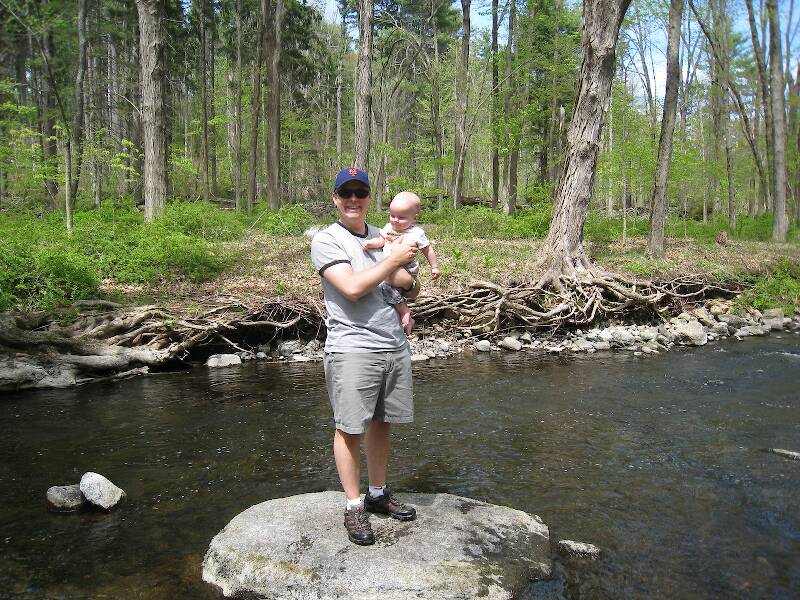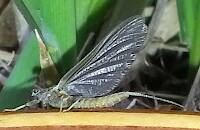
Salmonflies
Pteronarcys californica
The giant Salmonflies of the Western mountains are legendary for their proclivity to elicit consistent dry-fly action and ferocious strikes.
Featured on the forum

This species was fairly abundant in a February sample of the upper Yakima.

Troutnut is a project started in 2003 by salmonid ecologist Jason "Troutnut" Neuswanger to help anglers and
fly tyers unabashedly embrace the entomological side of the sport. Learn more about Troutnut or
support the project for an enhanced experience here.
CAuletta on Jun 5, 2012June 5th, 2012, 9:12 am EDT
Wondering if someone could help me with a pattern I am trying to replicate. I went to a fly tying demo at my local trout unlimited, took a lot of notes, and have been able to replicate all but one as it calls for tying in partridge under-feathers towards the eye, which I have never done before. Basically, the fly is tied on a scud hook with green thread, a few strands of a mallard feather for a tail, and then I wrote "tie in partridge secondary feathers towards eye" and have no idea what I had been intending... any ideas? I tried tying in the secondary feathers like a typical hackle wing, but the shaft of the feather is too thick and bulky. Would greatly appreciate your help if you have any experience with using these feathers.
Regards,
Chris
Regards,
Chris
Softhackle on Jun 5, 2012June 5th, 2012, 1:00 pm EDT
Well, your notes could mean a number of things. If this was caddis pupal pattern, sections of the secondary flight feather on the wing could have been tied in as under developed wings like these:

It is also possible the tier meant secondary under-coverts from the wing tied as hackle rather than wings. Under coverts were often used on soft-hackle wets as a hackle.
I'd suggest next time do a little sketch of the fly.
Can you get in touch with the tier?
Mark

It is also possible the tier meant secondary under-coverts from the wing tied as hackle rather than wings. Under coverts were often used on soft-hackle wets as a hackle.
I'd suggest next time do a little sketch of the fly.
Can you get in touch with the tier?
Mark
"I have the highest respect for the skilled wet-fly fisherman, as he has mastered an art of very great difficulty." Edward R. Hewitt
Flymphs, Soft-hackles and Spiders: http://www.troutnut.com/libstudio/FS&S/index.html
Flymphs, Soft-hackles and Spiders: http://www.troutnut.com/libstudio/FS&S/index.html
CAuletta on Jun 7, 2012June 7th, 2012, 8:28 am EDT
Thanks, Mark. I was able to make contact with the tier yesterday and was able to get some help, but still trying to picture how it will look. I'll try out some possibilities tonight. The tier confirmed that it is an olive soft hackle emerger where he ties on the secondary feather about 2 eye-lengths from the eye, wraps it once or twice and then whip finishes. Simple as that. I'll let you know how it goes.
Quick Reply
Related Discussions
Topic
Replies
Last Reply
6
Apr 17, 2013
by Sayfu
by Sayfu




